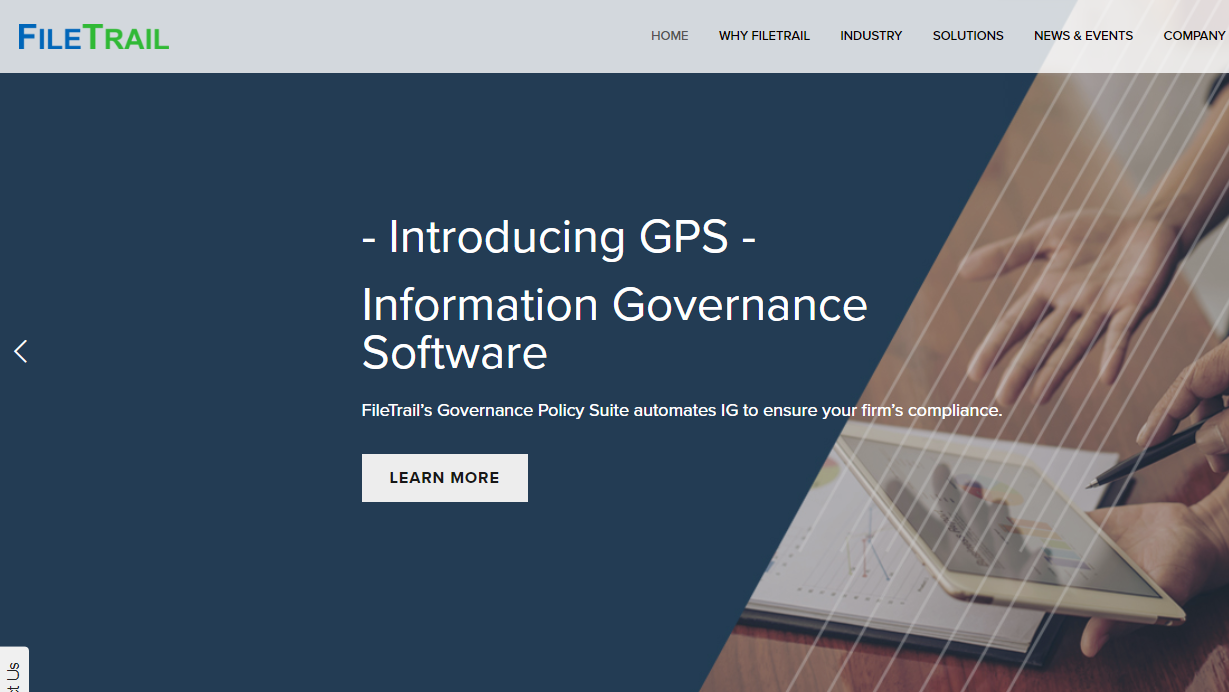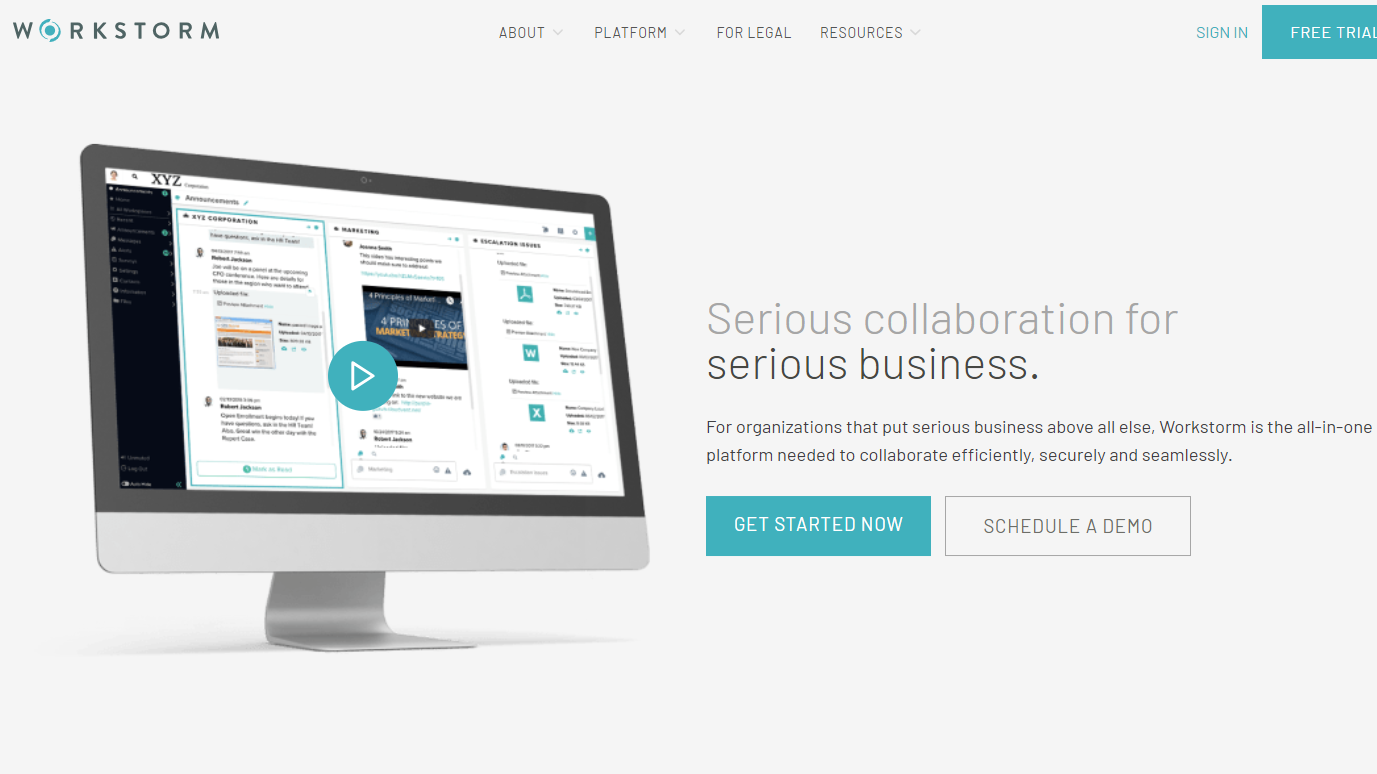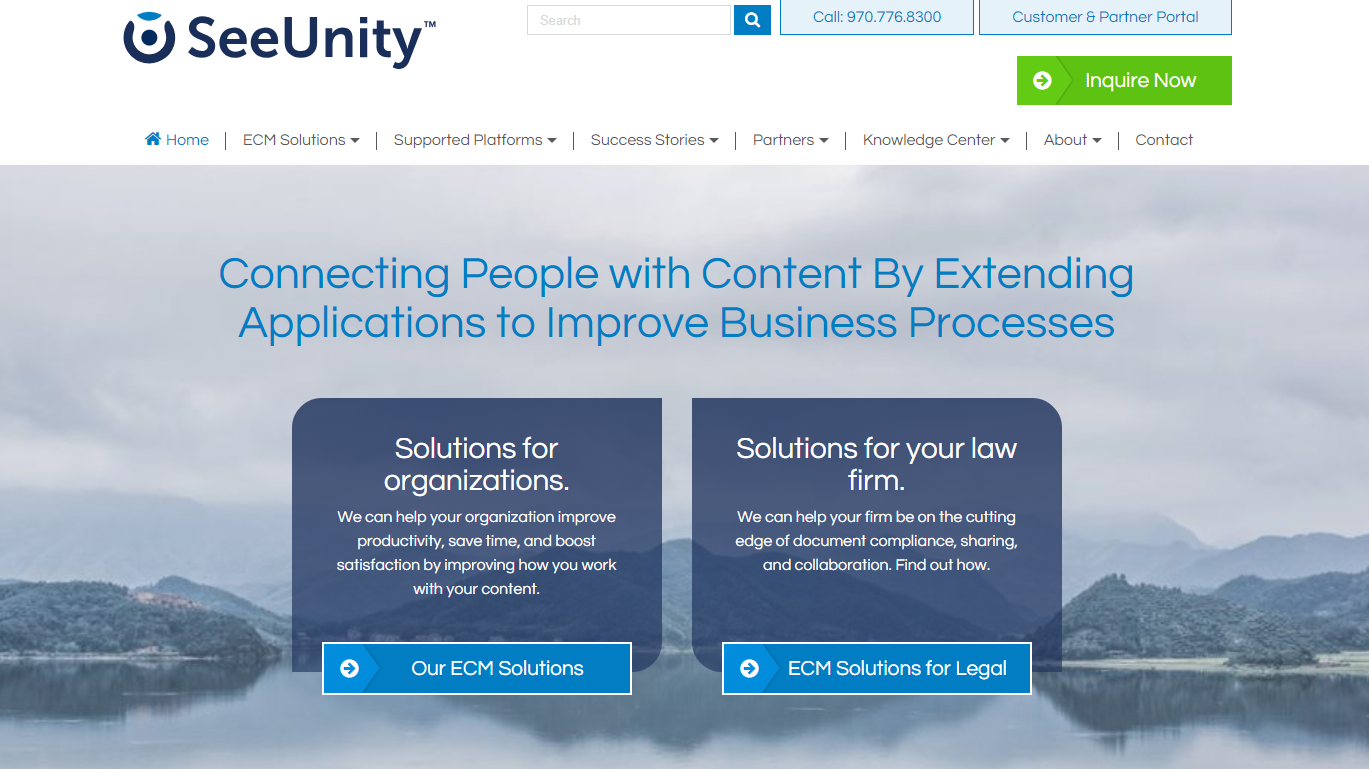Last week, I was at ILTACON, the annual meeting of the International Legal Technology Association, where I sat down with a number of legal technology companies for briefings on their latest news and products. All this week, I’ve been posting a four-part roundup of what I learned in those meetings. I started Monday with Part 1, Tuesday with Part 2, and Wednesday Part 3. Here is the final installment.
FileTrail offers both cloud-based and on-premises systems for records management and governance at law firms and corporate legal departments. At ILTACON, I met with Darrell Mervau, cofounder and president. who told me about the GPS (Governance Policy Suite) product the company released earlier this year and a recent update designed to address the expensive overhead and complex tasks associated with matter mobility, including lateral moves and other records transfers.
FileTrail GPS integrates outside counsel guidelines and policies on electronic and physical document retention into a firm’s matter management platform, with the goals of both automating compliance and mitigating risk. It provides the ability to:
- Manage document retention policies against matters.
- Apply policies to documents in all repositories.
- Create ad hoc reports, including graphical trends and forecasts.
- Deliver on-demand audit reporting to document compliance.
Earlier this month, the company announced an update to FileTrail GPS to address the issue of matter mobility resulting from lateral moves or other records transfers. The upgrade provides a set of tools designed to streamline the process of returning records to clients or departing attorneys.
Workstorm provides enterprise-grade workplace collaboration technology. At ILTACON, I met with Michele C.S. Lange, vice president, legal marketing, and Raj Fernando, founder and CEO. I will not go into a lot of detail about this company, because I will soon be publishing a more in-depth post about it. But I will tell you about its announcement at ILTACON.
Workstorm announced an Integration with the document and email management platform iManage. The integration allows users working within the Workstorm platform to have easy access to the iManage Work 10 DMS platform. The integration means that Workstorm users will be able to securely view, open, send and receive iManage documents and emails within the Workstorm platform, as well as edit documents and maintain version control.
Next up for Workstorm, Lange told me, is to develop a time-and-billing integration.
Casepoint, in business 10 years, was one of the first to offer a cloud-based, end-to-end e-discovery platform, from collections and data processing through to review, production and case strategy. At ILTACON, I met with Haresh Bhungalia, CEO, and David Carns, chief strategy officer.
The company emphasizes that all of its technology is its own, developed inhouse. It is hosted in a private cloud infrastructure managed by the company. It can also be deployed on premises or in the public cloud.
“We are best for large-scale data volumes,” Bhungalia told me. “That’s where you’ll fee the value.”
Its customers include larger law firms, corporations, and public sector agencies. About 60 percent of its customers are law firms, 20 percent corporations and 20 percent public sector. Many customers switch to Casepoint from older platforms such as Concordance, but more recently, Bhungalia said, several have moved from Relativity. “We are seeing a whole new level of maturity in how law firms are doing e-discovery.”
While Casepoint can now “check the e-discovery box,” as Carns commented, the next stage for the company is to expand its product into a broader platform that can support a range of apps. This will allow clients to build apps tailored to specific uses. As an example, when a client recently had a major data migration to manage, Casepoint built an app within 48 hours to facilitate the process.
To enable that, Casepoint over the last two years has been rebuilding its core platform from bottom to top. It will support everything Casepoint does in e-discovery, but will also be an entire legal technology platform that will support time-and-billing, matter management, and time management. Clients will be able to build their own apps to run on this platform, both in support of e-discovery or for unrelated purposes.
“We actually built this out of our need,” Carns told me. ” We thought, ‘How about if we create one application that will allow us to configure a number of applications.’ The Casepoint framework will enable people to go beyond e-discovery and manage a number of workflows.”
SeeUnity is in the business of making connections — not people-to-people connections, but people-to-content connections. Its business is to build technology to connect, synchronize or migrate data between enterprise content management (ECM) systems and other business applications. Founded in 2005, the company now supports 20 connectors and provides migration and synchronization tools to more than 500 customers and 30 partners worldwide.
At ILTACON, I met with Dan Anderson, one of the company’s founders and now its CEO. Although the company serves a range of industries, its entree into legal came about through a partnership with DMS company OpenText. It now has partnerships with a number of companies that serve the legal market, including iManage, NetDocuments, HighQ, Microsoft, Box and Salesforce. With iManage, for example, SeeUnity is working to automate the process of taking its on-premises customers to the cloud.
 Robert Ambrogi Blog
Robert Ambrogi Blog


